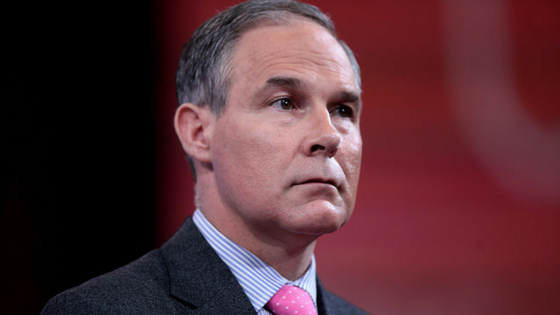As of January 3, 2018, the EPA employed 14,162 workers. That number is down from about 15,000 from just two years prior. If all employees who are eligible for retirement choose to do so by the year 2021, the EPA workforce should shrink by nearly half.
EPA Administrator Scott Pruitt has said in a statement that, “We’re proud to report that we’re reducing the size of government, protecting taxpayer dollars and staying true to our core mission of protecting the environment.”
Of course, several Trump cabinet officials have embraced the idea of shrinking or restructuring their agencies.
But the reorganization of the EPA could result in shifting tens of thousands of workers to new locations. That might also include moving the headquarters of major bureaus within the Interior – such as the Bureau of Land Management and the Bureau of Reclamation.
The current number of EPA employees has not been this low since 1989.
In 1999, more than 18,000 employees worked for the EPA.
“In the course of those 18 years there’s been increased programs for EPA and our budget has basically not been flat, it’s actually been regressing, when you look at current dollars,” says John O’Grady, president of the American Federation of Government Employees Council 238.
Pruitt and the agency’s chief operating officer, Henry Darwin, are relying on a “lean manufacturing” approach that focuses on labor-management dialogue to curb defects and cut delays.
President Trump set forth two executive orders last year to help accomplish regulatory efficiency goals. The downsize of employees in the agencies like the EPA are a result of those orders.
The EPA has 27 laws and orders listed on their website. Over half of which have been enacted or updated in the last 25 years.
According to the agency’s website, these laws serve as the EPA’s foundation for protecting the environment and public health.
Congress gives the EPA authorization to develop and enforce environmental laws. The federal agency often sets national standards that states and tribes enforce through their own regulations. If they fail to meet the standards, the federal government can and does step in.
The EPA website also lists several different purposes that the agency serves. This includes:
- All Americans are protected from significant risks to human health and the environment where they live, learn, and work;
- National efforts to reduce environmental risk are based on the best available scientific information;
- Federal laws protecting human health and the environment are enforced fairly and effectively;
- Environmental protection is an integral consideration in U.S. policies concerning natural resources, human health, economic growth, energy, transportation, agriculture, industry, and international trade, and these factors are similarly considered in establishing environmental policy;
- All parts of society—communities, individuals, businesses, and state, local and tribal governments—have access to accurate information sufficient to effectively participate in managing human health and environmental risks;
- Environmental protection contributes to making our communities and ecosystems diverse, sustainable and economically productive; and
- The United States plays a leadership role in working with other nations to protect the global environment.
In short, the EPA has achieved several significant accomplishments over the years. Some fear that the decrease in employees could have a negative effect on the progress that has been made. It will be up to the federal government to prove that a reduction in numbers does not translate to a reduction in the safety of human health and the environment.
